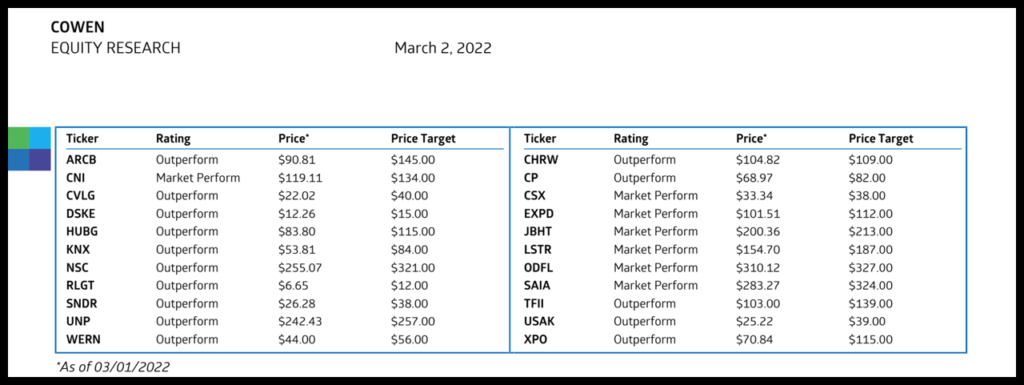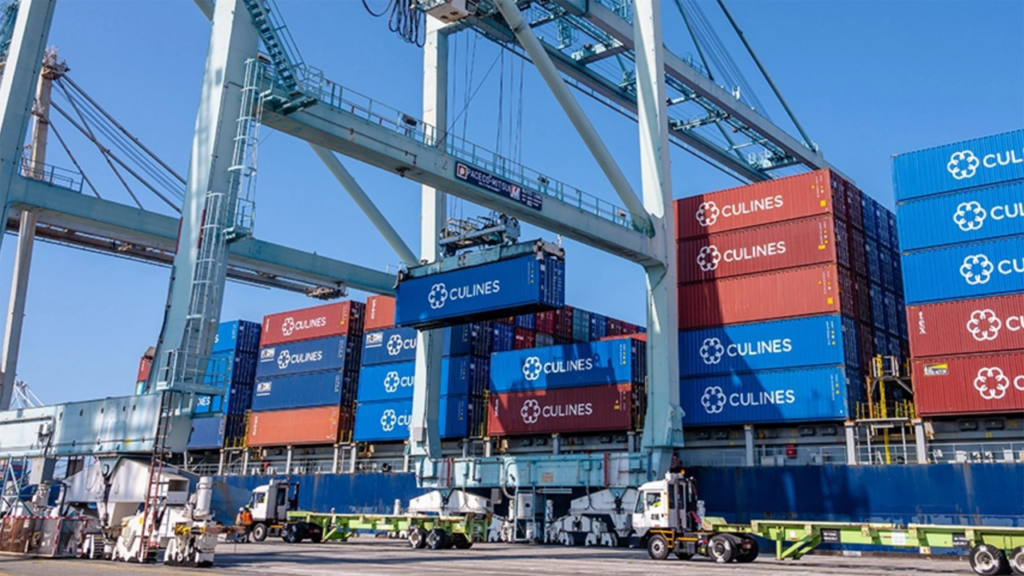
Suds With Seidl: Positives From ‘Railroad Happy Hour’
Written by Jason Seidl, TD Cowen, Wall Street Contributing Editor
Rail demand continues to be strong as operators lean further into pricing. Leaders from across the railroad and logistics industries provided market insight at Cowen and Company’s recent “Suds With Seidl” event.
They praised the coordination of CSX, while consensus on Norfolk Southern’s (NS) network and fluidity was decidedly negative, citing a potential loss of business due to performance. Intermodal demand remains robust.
Among our key takeaways:
• 2022 has been a strong for railroads so far, although not all operators have been executing. A continued robust rate environment has positioned the rails for a strong start to the year, on top of some carload volumes improvements we have seen in recent weeks. That said, numerous panelists shared noteworthy anecdotes regarding the lack of execution and fluidity on NS. One panelist highlighted that it is taking NS twice as long to move a box, which will likely cost the railroad business as customers take action on the lack of performance. On the other coast, Union Pacific (UP) has been a real challenge as well, and recently implemented a massive surcharge: $4K per box beginning March 13 for some customers. One intermodal panelist stated they lost $40K worth of product in one day on the UP due to rail theft, which has been rampant for the company.
• On the terminal and port side, customers continue to do everything they can to get their product where they need it and are not concerned about price. The largest challenge within the ports is that they are dependent on trucking supply, which continues to be severely challenged. Several panelists complained about high drayage rates. While we are starting to see some slight easing of congestion at the West coast ports, it is too early to tell if this is a lagged effect of the Lunar New Year, or if backlog really has improved. We note that dwell times have significantly increased at the Port of Charleston, as it was reported more than 30 vessels were anchored off the coast.
• The effect of the war in Ukraine will have implications across the transportation landscape. One panelist stated that complying with sanctions was a “voyage of interpretation” at the moment. We are already seeing fuel pricing surge amid concerns. Unfortunately, equipment shortages and congestion are limiting railroads’ ability to take on much additional freight.
• Demand for both existing and newly manufactured railcars remains strong. This is a result of elevated scrapping over the last 18 months and solid underlying freight demand. While steel and scrap prices moderated somewhat in recent weeks, the turbulence in Europe could cause them to rise again. North American industry fleet utilization has improved to just above 80%, from a dismal 68% in mid-2020. The panelists noted that many lease fleets are near full utilization, helping to keep the positive rate momentum intact. Manufacturing lead times are stretching well into 2023.
Investment Risks
Primary Air Freight and Logistics Industry Risks:
• Risk of economic downturns and their potential impact on the integrated parcel business.
• Rising fuel prices could significantly increase operating costs.
• Competitive threat posed by other modes of freight transportation, such as rail and trucking.
• Risk of doing business abroad, including currency exchange, political and legal risks.
• Risk of terrorism and the costs associated with more stringent security requirements.
Primary Rail Investment Risks:
• Risk of economic downturns and their impact on rail traffic and pricing.
• Regulatory risk posing a threat to the railroads’ ability to achieve sufficient returns on their investments.
• The possibility of higher-speed passenger rail encroachment.
• Litigation risk stemming from accidents and fatalities.
• Competitive threat posed by other modes of freight transportation, such as trucking.
• High capital spending required to build and maintain railroad networks and to replace cars and locomotives.
• Risk of severe weather disrupting railroad networks.
• Rising fuel costs and the lag effect of fuel surcharge recovery.
Primary Trucking Investment Risks:
• Risk of economic downturns and their impact on tonnage and pricing.
• Litigation risk stemming from accidents and fatalities.
• Competitive threat posed by other modes of freight transportation, such as the railroad sector.
• Rising fuel prices could significantly increase truckers’ operating costs.
• Environmental concerns and regulations associated with air pollution.
• Driver availability and stricter driver screening requirements.
• Risk of severe weather disrupting trucking operations.





